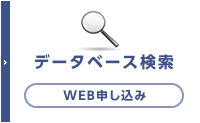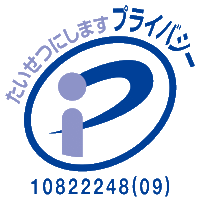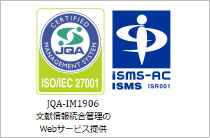ホームIMICライブラリMMWR抄訳2018年(Vol.67)HIV感染のある15歳未満の小児での抗レトロウイル・・・
2018/05/18Vol. 67 / No. 19
MMWR67(19):552-555
Trends in Antiretroviral Therapy Eligibility and Coverage Among Children Aged <15 Years with HIV Infection — 20 PEPFAR-Supported Sub-Saharan African Countries, 2012–2016
HIV感染のある15歳未満の小児での抗レトロウイルス療法の適格と実施の傾向 ― PEPFAPで支援されるサハラ以南のアフリカ20カ国、2012年~2016年
ヒト免疫不全ウイルス(HIV)感染のある15歳未満の小児において、急速な疾患進行と関連する日和見感染は、高死亡率の一因となる。 抗レトロウイルス療法(ART)は、過去10年間にわたり小児期HIV関連の疾病率および死亡率を減少させてきた。早期のART開始によるHIV関連死亡率の低下を示すエビデンスが蓄積されるにつれて、WHOガイドラインはHIV感染児のART適格を拡大し、 HIV感染児のART開始時の年齢は、臨床的または免疫学的状態にかかわらず、2010年、2013年、2016年のWHOガイドラインではそれぞれ2歳未満、5歳未満、15歳未満へ順次拡大された。アメリカのPresident’s Emergency Plan for AIDS Relief(PEPFAR)は、2003年からHIV感染児のためのARTを支援しており、WHOのガイドラインとエビデンスベースの情報によって、PEPFAR支援国が国内の小児ガイドラインを調整してきた。CDCはART実施率の格差とともに、ガイドラインの作成と実施の時間差を解明するために、全国の小児HIVガイドラインを調査し、Joint United Nations Programme on HIV and AIDSのデータを分析した。2012年~2016年の間に20カ国でのART適格年齢は上昇し、 2012年には95%の国で2歳未満であったが、 2016年までに、35%の国で5歳未満、65%の国で15歳未満のすべての小児が対象となった。2013年では、20カ国のうち6カ国(30%)で、HIV感染のある5歳未満のすべての小児にART適格を推奨する2013 年のWHOガイドラインが採択された。 2014年までに16カ国(80%)がガイドラインを採択し、2015年までに20カ国すべてがこの政策を実施している。 2016年末までに、20カ国のうち13カ国(65%)で、15歳未満のすべての小児に対するART適格性に関する2016 年のWHOガイドラインが採用された。HIV感染児のART実施率は、2012年の24%から2016年では44%に増加した。 一方、ART実施の格差は2012年から2016年の間に着実に減少したが、2016年時点でARTを実施していないHIV感染児は約75万人(56%)であった。2016年では、国内の小児のART実施率は5%(南スーダン)~66%(ナミビア)で、データが利用可能であった18カ国中11カ国では50%未満であった。ART実施率の格差を解消するには、WHOガイドラインの迅速な採択と、HIV感染児を特定し、HIV治療プログラムと結び付け、治療の維持を確実にするためのARTプログラムを強化する必要がある。
References
- Marston M, Becquet R, Zaba B, et al. Net survival of perinatally and postnatally HIV-infected children: a pooled analysis of individual data from sub-Saharan Africa. Int J Epidemiol 2011;40:385–96. <https://doi.org/10.1093/ije/dyq255>
- Violari A, Cotton MF, Gibb DM, et al.; CHER Study Team. Early antiretroviral therapy and mortality among HIV-infected infants. N Engl J Med 2008;359:2233–44. <https://doi.org/10.1056/NEJMoa0800971>
- World Health Organization. Antiretroviral therapy for HIV infection in infants and children: towards universal access. Geneva, Switzerland: World Health Organization; 2010. <http://www.who.int/hiv/pub/paediatric/infants2010/en/>
- World Health Organization. Consolidated guidelines on the use of antiretroviral drugs for treating and preventing HIV infection. Geneva, Switzerland: World Health Organization; 2013. <http://www.who.int/hiv/pub/guidelines/arv2013/download/en/>
- World Health Organization. Consolidated guidelines on the use of antiretroviral drugs for treating and preventing HIV infection. Geneva, Switzerland: World Health Organization; 2016. <http://www.who.int/hiv/pub/arv/arv-2016/en/>
- Joint United Nations Programme on HIV/AIDS. AIDSinfo. Geneva, Switzerland: Joint United Nations Programme on HIV/AIDS; 2017. <http://aidsinfo.unaids.org/.>
- Nelson LJ, Beusenberg M, Habiyambere V, et al. Adoption of national recommendations related to use of antiretroviral therapy before and shortly following the launch of the 2013 WHO consolidated guidelines. AIDS 2014;28(Suppl 2):S217–24. <https://doi.org/10.1097/QAD.0000000000000239>
- Puthanakit T, Saphonn V, Ananworanich J, et al.; PREDICT Study Group. Early versus deferred antiretroviral therapy for children older than 1 year infected with HIV (PREDICT): a multicentre, randomised, open-label trial. Lancet Infect Dis 2012;12:933–41. <https://doi.org/10.1016/S1473-3099(12)70242-6>
- Dziuban EJ, Rivadeneira ED. Universal antiretroviral treatment eligibility for children and adolescents living with HIV: a new era. Pediatr Infect Dis J 2016;35:1225–8. <https://doi.org/10.1097/INF.0000000000001276>
- ICAP at Columbia University. PHIA project. New York, NY: ICAP at Columbia University; 2018. <http://phia.icap.columbia.edu/.>
Copyright © 2013 International Medical Information Center. All Rights Reserved.












